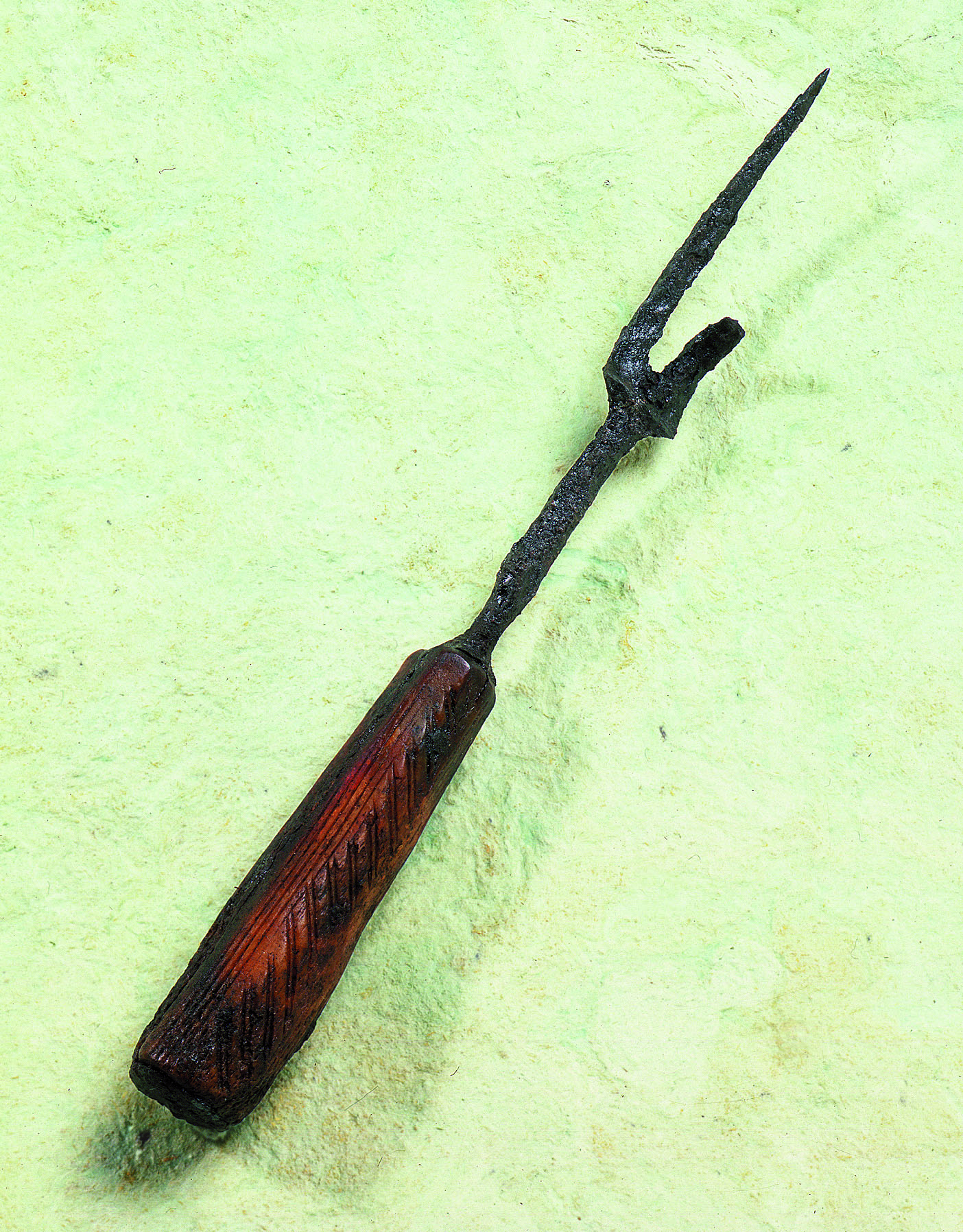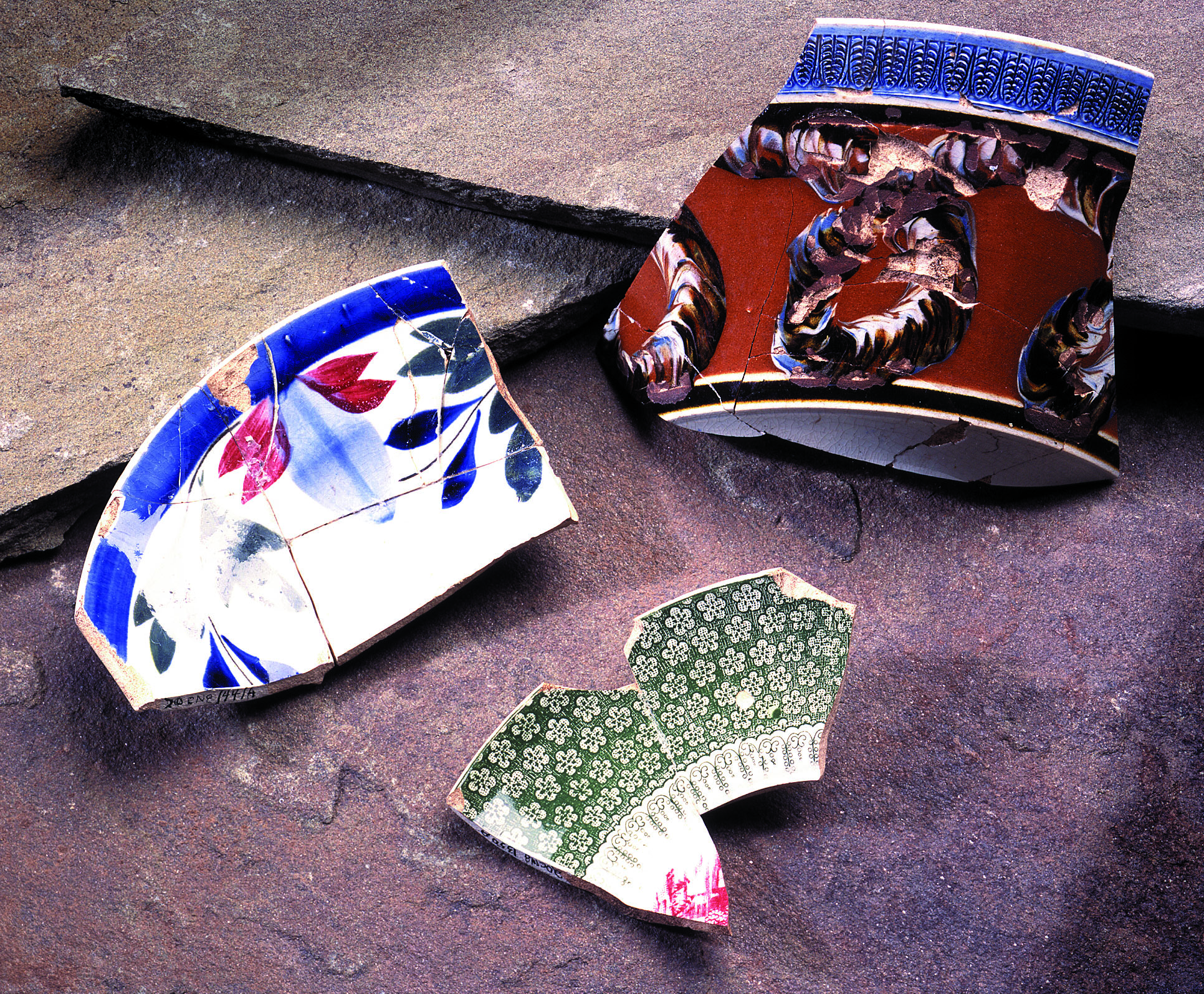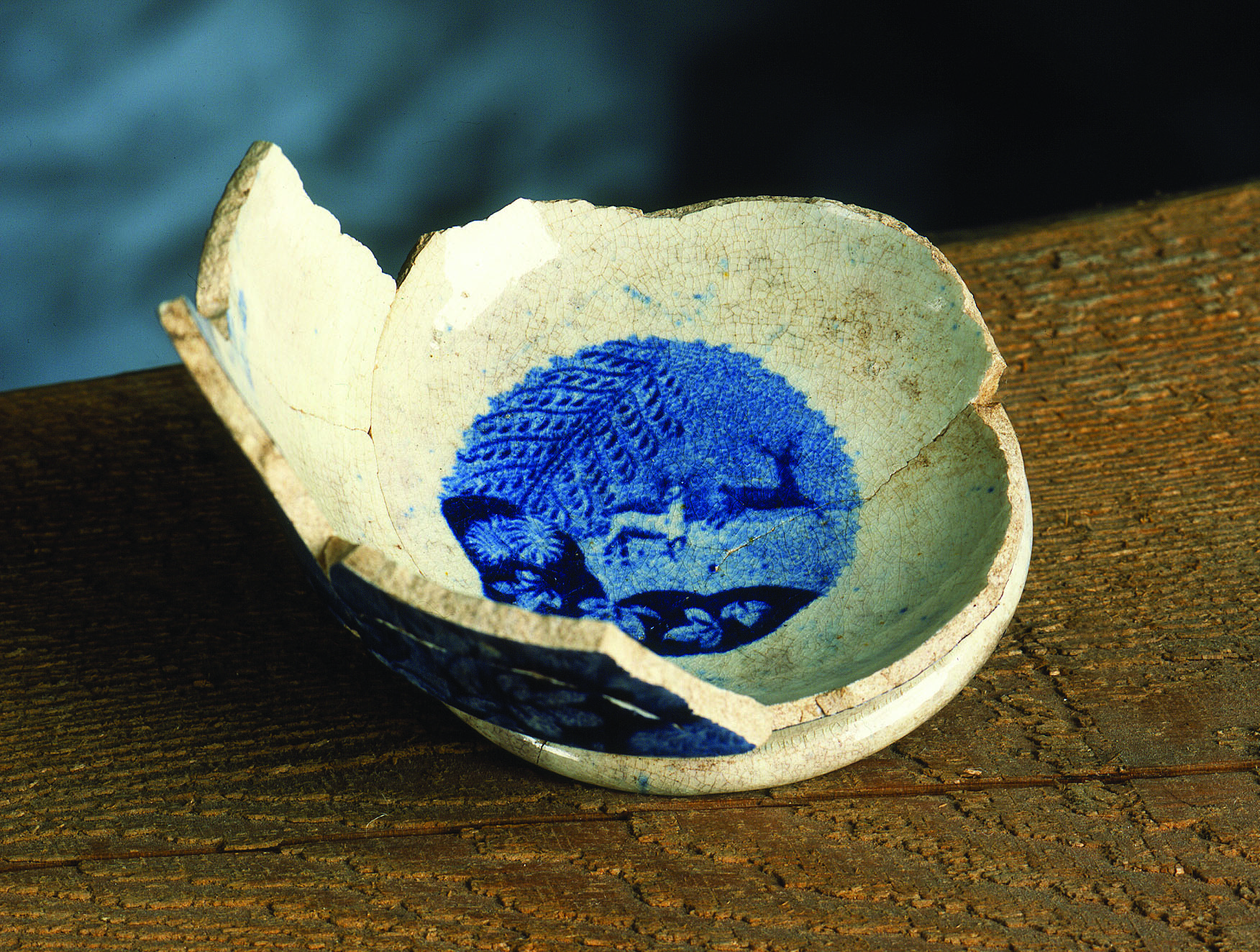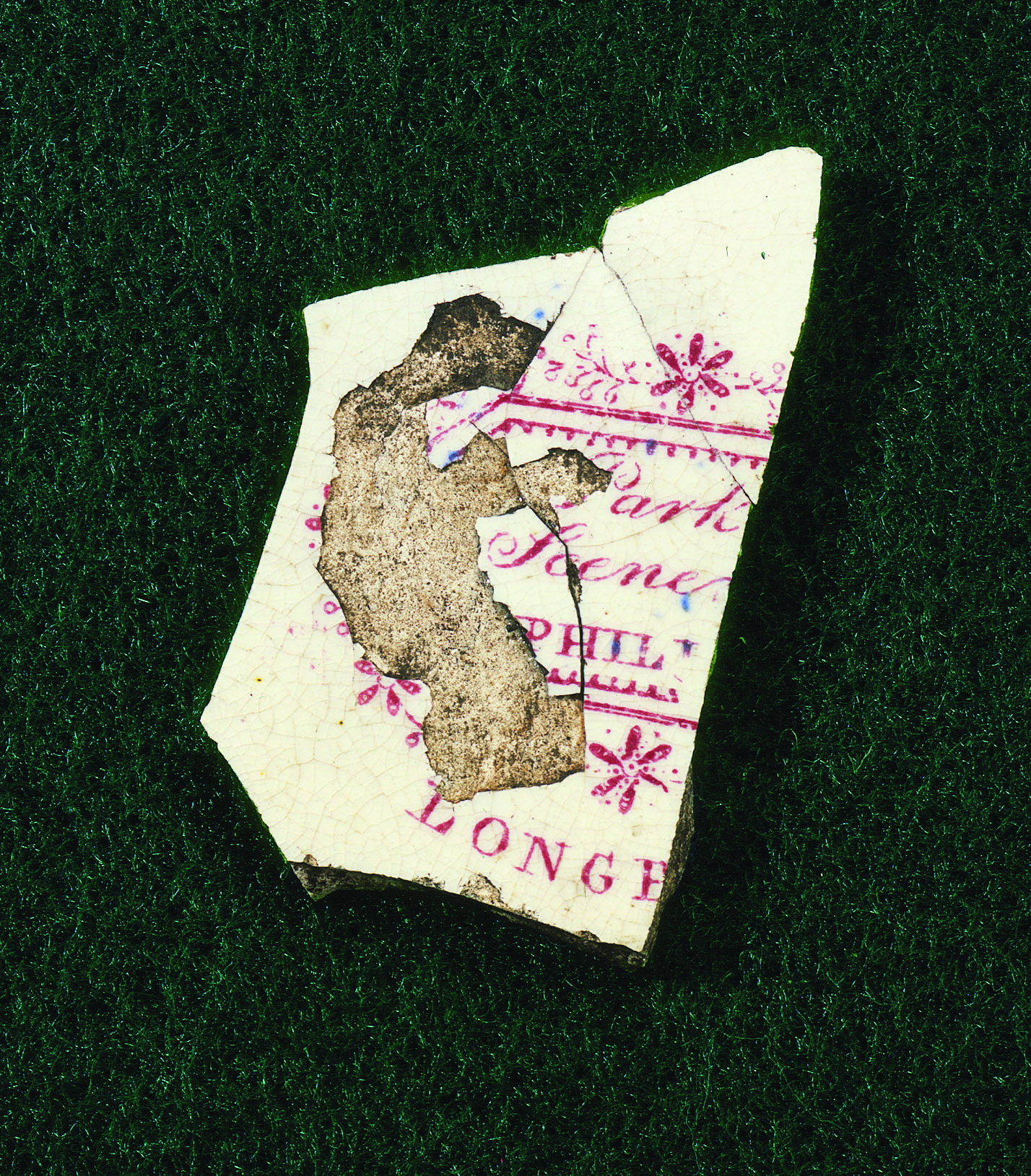
Marked Button
Buttons are sometimes stamped with a maker’s mark. This plain-faced copper alloy button is stamped “LONDON*IMPERIAL,” a mark we have not yet been able to trace.

Buttons are sometimes stamped with a maker’s mark. This plain-faced copper alloy button is stamped “LONDON*IMPERIAL,” a mark we have not yet been able to trace.

Bottle function is extremely difficult to determine based on form. A small bottle such as this could have held condiments, pharmaceutical or toilet items. Once emptied of their original contents,

Although four-tined forks were developed for fine dining in the mid-eighteenth century, two-tined forks continued to be used long afterward in informal settings. This fork has a hand carved bone

Some items have not changed much in the past two hundred years. Cleaned up, this nickel-plated spoon would look right at home in a modern American kitchen.

The Industrial Revolution led to an explosion of new technologies in the ceramics industry. Many colors and patterns became widely available at affordable prices. Banded ceramics were particularly popular in

Transfer printing allowed intricate designs to be mass-produced. Blue was the most popular color, but black, brown, green, red and purple transfer-printed wares were all produced.

Maker’s marks became increasingly common throughout the nineteenth century. Finding fragments of them helps identify what the pattern looked like and where and when it was made. This mark is